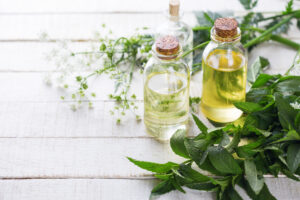It’s official, Halloween is well and truly over, the shops have long ditched the mountains of spooky paraphernalia are now going into overdrive with their Christmas offerings. Rows upon rows upon rows of glittering, sparkling ornaments, lights, decorations, fake trees, festive food, and gifts are stuffed onto shelves and piled up on the floor.
The problem is, most of these things are either plastic or wrapped in plastic, so if you’re trying to cut down on or stop using the material, then Christmas can be a tough time to avoid the stuff.
Having a plastic-free Christmas does take some work, and we’re not suggesting you throw out all your existing plastic decorations. Still, with a few adjustments, you can significantly lower the use of plastic during this festive season.
Stop buying gift wrap
All that sparkly gift wrap generally has some use of plastic within it – especially if it contains glitter. Refusing to buy it is one of the easiest things you can do to reduce plastic waste.
Great alternatives for shop-bought gift wrap are:
- Keep the wrapping paper from gifts you receive and reuse it
- Newspaper sheets or pages from magazines are great for wrapping kids gifts or gifts from Santa
- Brown parcel paper for a gorgeous rustic look. You can finish it off with natural string and green foliage
- For a really luxurious effect, you can adopt the ancient Japanese gift wrapping method “furoshiki” and use scraps of beautiful fabric tied with ribbon or string
Make your own decorations
If you need more decorations to make your home more festive, instead of buying them, have a family craft session and make them together. Use materials you already have around the house to create something really unique:
- Cut strips of paper from newspapers or magazines etc. to create paperchains
- Popcorn threaded onto string makes a fab (and yummy) alternative to tinsel
- Go foraging in the woods for foliage, ferns, branches, and twigs to make your own wreath with
- A great one for kids – make your salt dough decorations. Follow this simple recipe to make the dough and use paint and other materials to decorate them.
Make food from scratch
We know that we live in a time-poor society and that making food from scratch is not always possible. Unfortunately, most pre-prepared food and snacks come in plastic packaging. Often, the only way to avoid the use of plastic is to cook or bake your own food.
If you don’t have time to cook, try to avoid buying food packaged in plastic. Farm shops, markets, and eco-conscious grocery stores are the best places to hunt for your Christmas goodies.
Buy experiences instead of physical gifts
Kids’ toys are usually full of plastic. So are those toiletry and bath gift sets you get from supermarkets. Kids are easily overwhelmed at Christmas, and adults typically find themselves the recipient of gifts they neither need or want.Instead of getting people more stuff, how about purchasing an experience instead?
Cookery or art lessons, cinema vouchers, trips to the zoo, aquarium or theme park, theatre, or pantomime tickets – the list is endless. Experiences are fun and will be remembered for far longer than a plastic toy or bottle of bubble bath.
Discover independent businesses
If buying an experience as a gift isn’t possible or appropriate, there are thousands of independent businesses out there that produce wonderful ethical and plastic-free goodies.Discover what’s being made local to you. Etsy and Amazon Handmade are great places to look online.You’ll be supporting small businesses as well as making great eco-friendly choices, so it’s win-win all round!
Create your own Christmas crackers
While lots of fun, those tiny little gifts in crackers are responsible for vast amounts of plastic rubbish each year as they’re usually binned fairly quickly. This year, why not make homemade crackers and fill with plastic-free goodies?Toilet rolls wrapped with beautiful paper and tied with ribbon not only look great, but they’re also environmentally friendly too.
Avoid glitter like the plague
Glitter is used in abundance during Christmas since it’s so sparkly and beautiful, but it’s also one of the worst things for the environment. It’s a microplastic, which means it ends up polluting everything from water supplies, oceans, natural habitats for animals, and even our bodies. Fortunately, there are environmentally friendly alternatives to glitter available, so invest in these if you insist on using the material.
Reuse then recycle
If you already own plastic decorations and ornaments or a plastic Christmas tree, then don’t get rid of them. Get the most use out of them as possible, and when they start falling apart, put them in the recycling. When replacing the items, invest in plastic-free alternatives.
You might not think that making these changes will make much difference, but the more we work to reduce our plastic consumption, the more the big stores and corporations will sit up and take notice. If the consumer demand for plastic-free alternatives is there, then we will start to see less of the stuff available.
Start looking at how you can reduce your use of plastic for this festive season and set yourself on the path to enjoying a very merry plastic-free Christmas!




